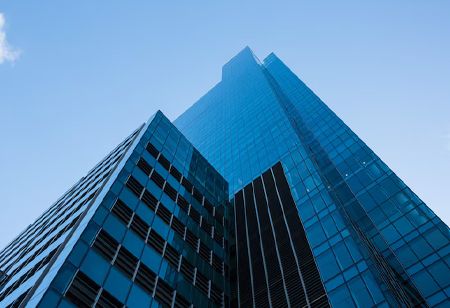
The ANAROCK Capital FLUX report for FY2024, reveals that, the aggregate value of private equity deals in Indian real estate has declined steadily over the past 5 years, from $ 5.1 billion in FY20 to $ 3.7 billion in FY24.
Shobhit Agarwal, MD & CEO – ANAROCK Capital, said, “The decline in PE investments in Indian real estate has been due to lower activity by foreign investors, due to global macro-economic factors and geopolitical instability. The share of foreign capital in total investments declined to 65% in FY24, against 78% in FY20. Correspondingly, investments by domestic investors have increased to 29% of the total capital inflows into Indian real estate in FY24, as compared to merely 8% in FY20.”
The share of the top 10 deals has increased primarily due to the $ 1.4 billion GIC-Brookfield deal (approx. 40% of the overall deal value for FY24), reported at the beginning of FY24. Multi-city transactions clearly stole the limelight during FY24, with the GIC-Brookfield transaction and the fund raise by Prestige Estates. NCR witnessed a relatively muted year, while MMR continued to dominate city-specific deal tables.
Private Equity(PE) investors always prefer evidenced by the fact that the share of equity deals remains healthy and at par with the average of 75% in the past 5 years. In the commercial segment offices are dominating with 57% value share. This was largely due to the GIC-Brookfield deal, which accounted for approx.40% of total transaction value in FY24. The residential segment is little behind with 28%.
Shobhit Agarwal further said, Ii the overall investments during FY24, foreign capital saw its share drop to 65% in FY24 while the share of domestic investor rose to 29% (against 8% in FY20).
Aashiesh Agarwaal, SVP - Research & Investment Advisory, ANAROCK Capital stated, “The luxury homes market continues to post a robust performance. Interestingly, demand for under construction properties rose sharply during the year. The improved sentiment has also encouraged large investor to increase their participation in the market. However, the aggregate investment in the sector is lower than in FY23, due to some larger-than-average transactions during the last year.”
Commercial real estate deals remained very thin on the ground, due to multiple factors such as the delayed notification of SEZ amendments, elevated interest rates, and global uncertainties. However, given strong demand fundamentals of commercial real estate, driven by leading IT companies’ determined push to return to office, increased traction of co-working spaces, a favorable capex cycle, the amendment of SEZ laws, and expectations of lower interests, commercial office real estate activity should strengthen over the coming quarters.
The retail segment of Indian real estate is thriving due to economic growth. Key names in the nation’s mall development arena, including DLF, Lakeshore, Inorbit, Nexus and Phoenix, are aggressively pursuing expansion. This surge in capital allocations aligns with the expansion strategies of leading retailers, resulting in a substantial uptick in store numbers. Rentals are expected to firm up, since economic buoyancy and robust consumer sentiment has led to healthy demand and trading densities for retail assets.
Towards the end of FY24, SEBI notified amendments to REIT regulations, paving the way for Small and Medium Real Estate Investment Trusts (SM REITs). This move aims to regulate fractional ownership of properties. Under these regulations, the minimum subscription size is lakhs, the minimum number of investors is 200, and asset size can range between Rs.50 Cr to Rs. 500 Cr.
The report further added that, during December 2023, RBI issued circular barring lenders from investing in AIFs where the AIFs had lent downstream to companies wherein the lender had exposures. For existing investments, lenders were required to liquidate within 30 days, or to set aside higher provisioning (100%) for their investments in such AIFs.
We use cookies to ensure you get the best experience on our website. Read more...
Copyright © 2025 HomesIndiaMagazine. All Rights Reserved.